(499 products available)







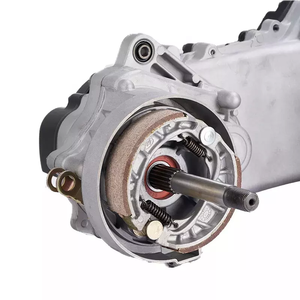







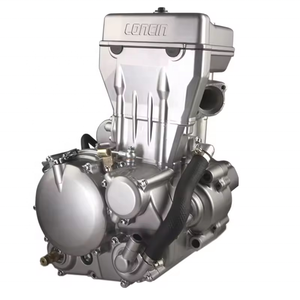
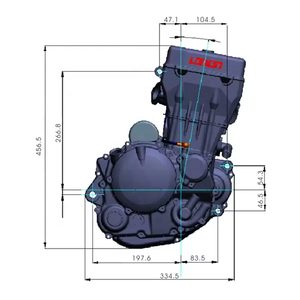
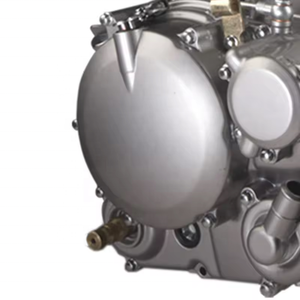
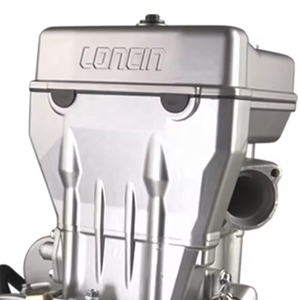
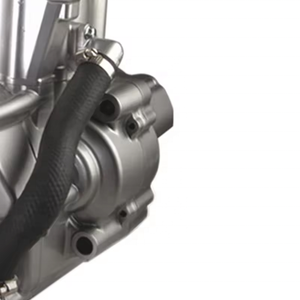
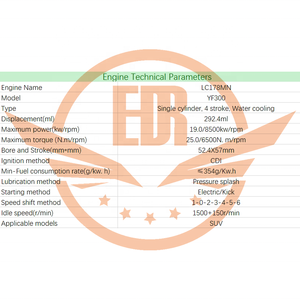































































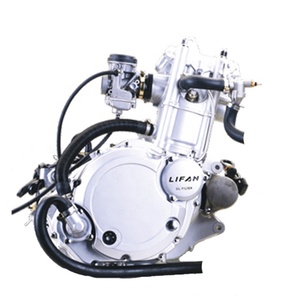

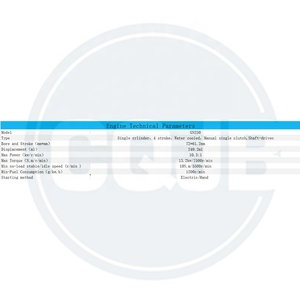
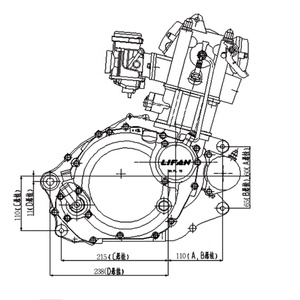
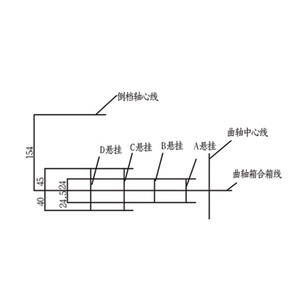











































































































Water motorcycle engines 50cc are small, affordable, and user-friendly engines. They are commonly used in jet skis, water scooters, and small boats. These engines offer a good balance of power and efficiency, making them suitable for various watercraft applications. Depending on the design and application, these engines may have slight variations in configuration, cooling, fuel delivery, and ignition systems.
Fuel
The water motorcycle engine requires high-quality gasoline. The gasoline should be as recommended by the manufacturer. The gasoline should not contain more than 10% ethanol or 5% methanol. The water motorcycle engine also requires periodic fuel system maintenance. The maintenance may include cleaning of the fuel filter and inspection of the fuel lines for leaks or damage.
Oil
The oil used on the water motorcycle engine should meet the specifications given by the manufacturer. The oil should be of high quality and suitable for the specific conditions of the engine. Additionally, the oil level should be checked regularly, and changes should be made according to the schedule provided by the manufacturer.
Cooling system
The water motorcycle engine is a water-cooled engine. Thus, the engine requires periodic checks of the cooling system. The checks may include inspection of hoses, the water level, and the coolant quality. The cooling system should also be flushed, and the coolant changed after the interval recommended by the manufacturer.
Air
The water motorcycle engine requires high-quality air. The water motorcycle engine requires periodic checks and maintenance of the air intake system. The maintenance may include cleaning or replacing the air filter and inspection of the intake hoses for leaks or damage.
Electrical
The water motorcycle engine electrical system requires maintenance and inspection of the electrical system components. The inspection may include the battery, starter motor, and charging system. The components are to be cleaned, and the connections are to be checked for corrosion or loose.
Exhaust
The water motorcycle engine exhaust system requires inspection and maintenance of the exhaust system components. The components may include the exhaust pipes and muffler. The inspection may include checking for damage and ensuring all components are securely mounted. The exhaust system should be cleaned periodically to reduce the buildup of deposits.
Spark plugs
The water motorcycle engine requires periodic inspection and maintenance of the spark plugs. The maintenance may involve checking for wear, cleaning, and replacement when necessary. Additionally, the spark plug gaps are to be adjusted according to the specification of the manufacturer.
Valves
Water motorcycle engine 50cc require periodic inspection and maintenance of the valve clearance. The maintenance may include adjustment of the clearance when necessary. The valve train components should also be checked for wear and replaced when necessary.
Choosing a water motorcycle engine 50cc can be a daunting prospect for any buyer. With several options available, it is important to know what to look out for when choosing a water motorcycle engine. Here are some factors to consider:
The first thing to consider when choosing a water motorcycle engine is the level of proficiency. For beginners, it is advisable to go for engines that are less powerful and offer a smooth ride. However, for advanced riders, powerful engines that provide speed and performance should be chosen.
Another factor to consider is the type of water conditions. When choosing a water motorcycle engine, consider the water condition. For rough waters, an engine with high power and good handling ability should be chosen. However, for lakes and rivers, an engine with moderate power and good stability can be chosen.
When choosing a water motorcycle engine, buyers should consider the maintenance requirement. Choose engines that have simple and easy maintenance requirements. Look out for engines with accessible parts that can be maintained easily. Also, consider the availability of service and support from the manufacturers or local dealers.
Buyers should also consider the environmental impact when choosing a water motorcycle engine. Choose engines that meet the environmental standards and have low emissions. Also, consider the fuel efficiency of the water motorcycle engine. Opt for engines that are economical and require less fuel.
Rider's budget also plays an important role when choosing a water motorcycle engine. Choose an engine that suits the pocket without compromising the quality. There are several options available in the market, so it is important to research well and find the one that fits the budget.
Finally, before choosing a water motorcycle engine, buyers should consider additional features such as storage, comfortable seating, and electronics. These features can make the ride more enjoyable and convenient.
It is important to note that not all 50cc water-cooled engines can be replaced in a simple, step-by-step manner. Because of the variance in design, it may be difficult to replace some of them without the help of a professional. However, here are some general steps to take when replacing a water motorcycle engine:
Q1. How fast can a 50cc water-cooled jet ski go?
A1. Generally, a 50cc water-cooled jet ski can go up to 30 to 40 mph. However, the speed may differ depending on various factors, such as the jet ski model, weight of the rider, and water conditions.
Q2. Is a 50cc jet ski good for beginners?
A2. Yes, a 50cc water-cooled jet ski is suitable for beginners, especially younger kids or those starting. It offers a more manageable and comfortable environment while learning the basic skills of riding jet skis.
Q3. How often should the engine oil be changed on a 50cc water-cooled jet ski?
A3. Change the engine oil on a 50cc water-cooled jet ski every 50 hours of operation or at least once per season. Maintaining a good routine jet ski engine oil change can help increase the jet ski engine's performance and durability.
Q4. Can I upgrade from a 50cc water-cooled jet ski to a higher cc jet ski?
A4. Yes, riders can upgrade from a 50cc water-cooled jet ski to a higher cc jet ski. However, ensure that the rider's skills and experience level can handle the increased power and performance of the new jet ski.
Q5. What is the maintenance schedule for a 50cc water-cooled jet ski?
A5. The maintenance schedule for a 50cc water-cooled jet ski is as follows: daily maintenance check the hull, clean the air filter, and check the battery. Weekly, check the jet pump and steering mechanism. Monthly, inspect the fuel system and check the spark plugs. Every 50 hours of operation, change the engine oil and filter. Yearly, do a complete jet ski engine tune-up and inspect the cooling system.